Middle East
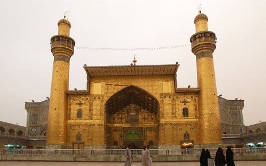
The Middle East is a world region in Western Asia and North-eastern Africa. The term was created by British military strategists in the 19th century, and definitions of the Middle East vary; it is not simply a geographical term, but also a political one, connoting that it separates Europe ("the West") from the Far East, and the traditional trade route of choice between these two extremes.
Egypt
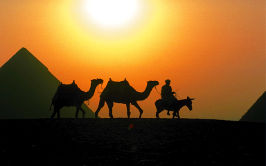
Egypt officially, the Arab Republic of Egypt, is in north-eastern Africa with its capital located in its largest city, Cairo. Egypt also extends into Asia by virtue of holding the Sinai Peninsula. Egypt is bordered by Israel and the Gaza Strip to the north-east, by Sudan to the south and by Libya to the west. The country is bounded by the Mediterranean and Red Seas (to the north and east respectively) and geographically dominated both by the Nile River and its fertile well-watered valley, and by the Eastern and Western deserts.
Egypt is perhaps best known as the home of the ancient Egyptian civilization, with its temples, hieroglyphs, mummies, and - visible above all - its pyramids. Less well-known is Egypt's medieval heritage, courtesy of Coptic Christianity and Islam - ancient churches, monasteries and mosques punctuate the Egyptian landscape. Egypt stimulates the imagination of western tourists like few other countries and is probably one of the most popular tourist destinations world-wide.
Highlights of any visit to Egypt include famous archaeological sites from both Lower (North) and Upper (South) Egypt. The most famous are:
Cairo
- The Pyramids of Giza and the Sphinx
- The Egyptian Museum
- The pyramids and temples of Saqqara and Dahshur
- Citadel of Salah El Din
- Mosque of Mohamed Ali

Alexandria: Alexandria, with several historical sights and the stunning new Bibliotheca Alexandrina, is the country's main summer attraction for Egyptians escaping the summer heat and looking for a place to spend the summer vacation. Tourist attractions include Roman and Greek monuments, Bibliotheca Alexandria, Qa'edbay's Castle, and Qasr El Montaza (El Montaza Palace).
Luxor:
The temples of Luxor and the West Bank across the Nile
- Valley of the Kings
- emples of Abu Simbel
Aswan:
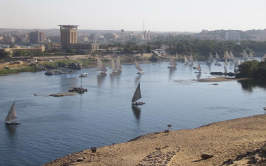
In Aswan, you can see even more temples and ancient monuments. You can also see Geziret El Nabatat (The Island of Plants). This is an island in the Nile River of Aswan which was planted by rare species of plants, trees, and flowers.
Perhaps the most popular activity in Luxor and Aswan is to do the Nile Cruise on a ship from Aswan to Luxor. It enables you to stop at each location along the Nile where you can see all the famous ancient monuments as well as experience being in the Nile River inside a five-star hotel boat.
- The Red Sea resorts at Sinai peninsula, including Dahab, Hurghada, and Sharm el Sheikh. The Red Sea offers some of the best dive locations in the world.
- The sights of the Sinai peninsula, including Saint Catherine's Monastery and Mount Sinai.
- The western desert and the oases there, including Siwa,
- Memphis, with some relics of ancient Egypt - including a huge statue of Ramesses II, evoking the image which inspired Percy Bysshe Shelley's poem Ozymandias
Iran
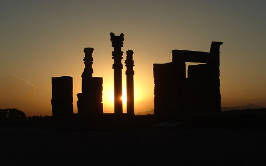
Iran is a large country between the Middle East and Central Asia, between the Gulf of Oman, the Persian Gulf, and the Caspian Sea. It is bordered by Iraq to the west, Turkey, Azerbaijan's Naxcivan enclave, Armenia, and Azerbaijan to the northwest, Turkmenistan to the northeast, Afghanistan and Pakistan to the southeast.
Ancient cities
- Hegmatane (or Ekbatana) - The capital of the ancient Meds. In modern-day Hamedan.
- Persepolise - Probably the most important historical site in Iran. The capital of the Achaemenid (Persian) Empire built by Darius. Near Shiraz.
- Pasargad (or Pasargadae) - The initial capital of the Persian Empire built by Cyrus the Great. Near Shiraz.
- Susa - Built by Elamites an then adopted by Achaemenid (Persian) and Sasanid empires, it has three layers of civilisation in it. Located in the modern-day town of Shush in the Khuzestan province.
- Chogha Zanbil- A ziggurat build by Elamites. Near Shush.
- Sialk Mound (Tappeh Sialk) - More than 7,000 years old, this is world's oldest ziggurat. In suburbs of Kashan.
- Jiroft
Museums
- Tehran Museum of Contemporary Art. Housing an impressive collection worth $2.5 billion dollars, it is one of the most important art museums of Asia. The museum displays artwork by famous Western artists including Pablo Picasso, Wassily Kandinsky, Andy Warhol, Marcel Duchamp and Jackson Pollock.
Palaces
- Sadabad. A palace complex where Mohammad-Reza Shah and his family used to live. Some palaces converted to museums now. In Tehran.
- Shamsolemare
Israel
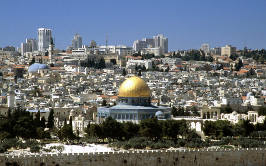
Israel is a small yet diverse Middle Eastern country with a long coastline on the eastern Mediterranean Sea and a small window on the Red Sea at the Gulf of Eilat (Aqaba). Israel is bordered by Egypt and the Gaza Strip to the southwest, by Jordan and the West Bank to the east, and by Syria and Lebanon to the north. It shares borders to the Jordan River and the Dead Sea with the West Bank and Jordan. The West Bank, East Jerusalem, and the Gaza Strip have been under Israeli de-facto rule since 1967. In addition to the majority Palestinian Arab populations living in these regions, the Israeli Government has built many Israeli settlements in the West Bank and East Jerusalem as well as in the annexed Golan Heights.
Although Israel was established specifically for the Jewish people, following the Second World War, Israel is considered part of the Holy Land (together with areas of Jordan, Egypt and the Palestinian Territories). The three major monotheistic religions -Judaism, Christianity, and Islam- all have historical ties to the region. Israel thus contains a vibrant modern history and culture, based in part on the diverse, immigrant origins of its inhabitants returning from the Jewish Diaspora. These aspects make Israel a fascinating destination for many travelers and pilgrims. As a result of this vast mix of culture, in addition to the official languages of Hebrew and Arabic, Russian and Yiddish are also spoken by a significant minority of Israelis. English in many ways acts as second language. Within Israel's recognized pre-1967 borders, about 80% of Israelis identify themselves as Jewish, the remainder classify themselves as either as Arab and or Palestinian, Bedouin or Druze.
Israel is a highly urbanized and economically developed society and is therefore best divided for the traveler into its main cities and towns, followed by the regions and other sites.
Jordan
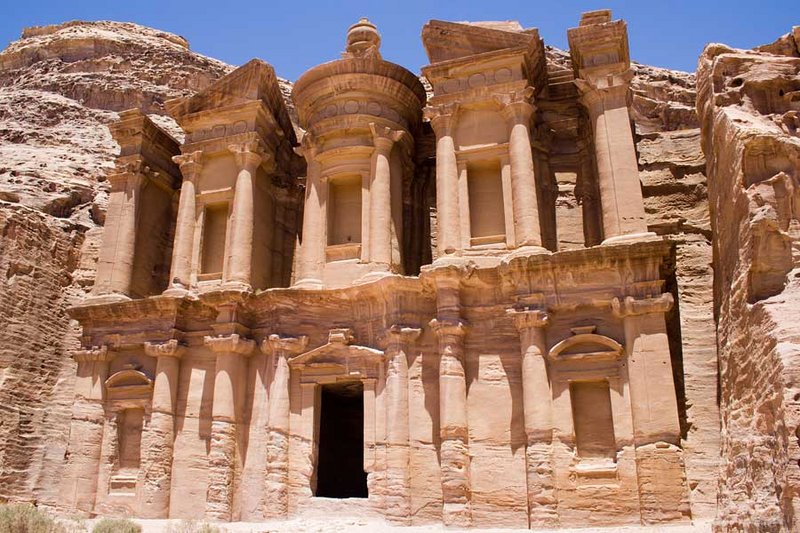
Jordan is a country in the Middle East. Almost completely land-locked (save for a small outlet on the Red Sea in the Gulf of Aqaba and a frontage on the Dead Sea), Jordan is bordered by Israel and the West Bank (Palestinian Territories) to the west, by Syria to the north, by Iraq to the east and by Saudi Arabia to the south.
Lebanon
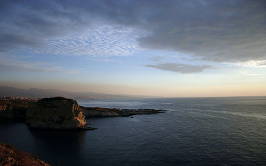
The Republic of Lebanon is a small country (10,452 sq km or 4076 sq mi in area with 3.7 million inhabitants) within the Middle East region with its capital being Beirut. It has a long coastline on the eastern shore of the Mediterranean Sea and shares a long land border with its much larger neighbour Syria to the north and the east, a much shorter (and currently "hot") border with Israel to the south.
Lebanon is a country rich in natural scenery from beautiful beaches to mountains and valleys. Lebanese people take pride that Lebanon is one of the few countries that gives you the opportunity to go skiing in the morning and going to the beach in the afternoon. Keep in mind that this is only actually possible for a few days in the year, usually in the few days when winter shifts to spring and/or summer shifts to autumn
Beirut Downtown Visitors from all around get astonished by the beautiful downtown. At Place de l'Etoile, tourists can enjoy a delightful meal or a cup of coffee at the outdoor cafes. In addition to those, the capital provides other restaurants and hangouts that people of all ages can enjoy. There are many also many nightclubs, bars, cafes, and restaurants, catering to a diverse amount of styles and budgets.
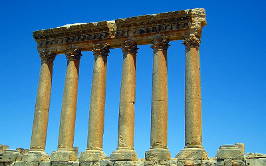
Baalbeck Roman Temples in the city of Baalbeck are among the largest and most beautiful Roman ruins.
Al Bass Archaeological Site, Tyre, a UNESCO World Heritage site and one of the largest and best preserved Roman archeological sites in the world. The site is made up of a huge Necropolis, a massive monumental arch leading to a Roman Road, alongside which there is an excellent example of an acqueduct as well as the largest and best preserved Roman Hippodrome found to date.
Jeita Grotto Jeita Grotto is nominated to be one of the new Seven Natural Wonders of the World. Jeita Grotto is the jewel of tourism in Lebanon offering to its visitors 2 fabulous grottoes. It is a source of attraction for whole the families wishing to discover a mysterious world in the heart of the earth. The “Touristic Site of Jeita” gathers all elements of nature such as stone, water, trees, flowers, air and animals in a venturous environment and with a touch of Lebanese cultural heritage. It is one of the most impressive and interesting natural sites in the world.
Beiteddin One of the most authentic Arabic architectural jewels is the palace of Beiteddine. This historic monument comprises two large courtyards: the “midane”, a vast rectangular place for visitors, and a smaller one for the royal private apartments, with a magnificent fountain in its centre.
Qadisha Valley (Holy Valley) Located in north Lebanon, the “Holy Valley” spreads from Bcharreh to the coast. Classified under UNESCO's world heritage, it is full of countless caves, chapels, and monasteries.
Byblos also known in Arabic as "Jbeil", is an ancient Phoenician city that had been declared a UNESCO World Heritage Site. Its touristic attractions include a medieval castle and a Roman amphitheater, as well as many seaside cafes and restaurants serving fresh seafood.
Anjar is a city in the Beqaa Valley with many local restaurants where you can enjoy the unique Lebanese cuisine. The city is home to the unique ruins of an 8th century Omayyad city.
Oman
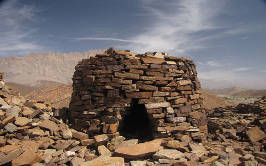
The Sultanate of Oman is in the Middle East, on the eastern end of the Arabian Peninsula. It borders the United Arab Emirates in the northwest, Saudi Arabia in the west, and Yemen in the southwest. Oman has two exclaves separated from it by the United Arab Emirates, the Musandam Peninsula and Madha.
Oman is famous for its historic forts which are the country's most striking cultural landmarks. There are over 500 forts and towers which were the traditional defence and lookout points to deter potential invaders. Some of the best examples are conveniently located in the capital, Muscat. Jalali and Mirani forts stand at the entrance to Muscat Bay and date from the early 16th century.
Bahla Fort at the base of the Djebel Akhdar highlands is a UNESCO World Heritage Site and has 7 miles of walls. It was built in the 13th and 14th centuries when Bahla was a thriving oasis town.
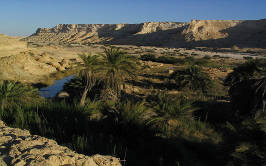
Oman's rugged montains offer some stunning scenery and probably the best opportunities for driving in dry wadis anywhere in the world. Many of the wadis have made roads (often unsurfaced but decent enough) while others require serious off-roading. You can easily get well off the beaten path into remote areas.
Huge desert dunes roll for as far as the eye can see at Wahiba Sands.
Oman's beaches are major breeding locations for various species of sea turtle. Masirah Island is the perhaps best bet where four species breed, including the largest number of leatherbacks anywhere in the world.
The country can boast not only vast expanses of desert, and hundreds of miles of uninhabited coastline, but also mountains of over 9000 feet.
Syria

Syria, the Syrian Arab Republic is one of the larger states of the Middle East and has its capital in Damascus. Syria is bordered to the north by Turkey, to the east by Iraq, by Jordan and Israel to the south, and by Lebanon to the south-west. In addition, the country has a short coastline on the east Mediterranean Sea.
United Arab Emirates
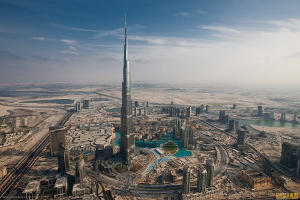
The United Arab Emirates is a federation of seven emirates on the eastern side of the Arabian peninsula, at the entrance to the Persian Gulf. It has coastlines on the Gulf of Oman and the Persian Gulf, with Saudi Arabia to the west and southwest, and Oman to the southeast and also on the eastern tip of the Musandam Peninsula as well as an Omani enclave within its borders. It is a country rich in history and culture and an easy starting point for travels in the Middle East.
UAE has some of the largest sand dunes in the world in the south of Abu Dhabi in the Liwa Oasis area. Beautiful beaches on the east coast and Rugged, remote wadis in the northern emirates.
